Changes in external respiration function of students in the normal course of business of Interschool Sports Club
Фотографии:
ˑ:
Ph.D., Associate Professor E.A. Cherepov1
Ph.D., Associate Professor V.V. Epishev1
1South Ural State University, Chelyabinsk
Keywords: sportized physical education, interschool sports club, teen aged pupils, external respiration function.
Introduction. The experience of the leading domestic scientists and practitioners makes abundantly clear that, currently, sportization of the educational space of the Russian school facilitates personal fulfillment of a modern pupil to the maximum extent. It is an upcoming and scientifically grounded trend in the process of formation of health of the rising generation [1, 4, 8].
Even if the third lesson of physical education a week is introduced to the school curriculum, the class-and-lesson system of organization of physical education will prohibit not only an age-appropriate personality-centered approach, but also the necessary optimal volume and intensity of loads. Physical education classes with normal for regular training intensity, conducted under the academic curriculum, cannot but affect the quality of readiness for the rest of the lessons under the school curriculum due to the lack of time for recovery and hygienic measures.
In terms of modern public recreational physical culture, the club system of organization of training is being implemented with increasing frequency. German researcher G.G. Kemmerer formulated the reasons for effectiveness of a sports club:
- focus on interests, an opportunity to choose sports;
- focus on competitive activity;
- focus on a healthy lifestyle: a more convenient form compared with private lessons or commercial sports programs;
- focus on volunteer work in the field of sport, when the majority of people work on a voluntary basis [4].
In recent years, there has been a revive of interest in the activities and organizational and managerial conditions of the development of sports clubs in the business environment. The Russian Student Sport Union gives broad support to the development of sports clubs in higher educational institutions.
A rather serious theoretical and methodological potential is accumulated in the studies of domestic scientists and practitioners dealing with the matter of establishment, functioning and improvement of effectiveness of sports clubs, established at the premises of the comprehensive school. The experimental data on the increase of sports motivation, improvement of physical development and physical fitness of pupil-members of sports clubs and reduction of behavior deviations are given in the literature.
The purpose of the research was to study the effectiveness of implementation of the project of an interschool sports club in the context of the dynamics of objective indices of the body functional systems of pupils, primarily, of the external respiration function.
Our choice is not accidental, as breathing is one of the most important functions of the body, which provides oxygen delivery, its engagement in oxidation processes and carbon dioxide removal. The condition of the respiratory system largely determines the human health at any age, as during pulmonary diseases the oxygen supply is insufficient, the effect of physical load on the heart increases, and the heart rate accelerates [5].
Materials and methods. Fig. 1 displays the model of the interschool sports club we had organized, which operated in 2013-14 academic years at the premises of the two geographically adjacent schools of the Kurchatov region of Chelyabinsk: Municipal Autonomous General Educational Institutions Comprehensive Secondary Schools №118 and №45. The interschool sports club coordinates physical culture and sports extracurricular activities of students , teachers and interested parents. In addition to the club forms presented in the figure, the experimental system of physical education naturally includes the class-and-lesson forms of physical education, where the third lesson a week is conducted in accordance with the author's modular program, which introduces pupils into different sports. The extracurricular forms against the club ones combine children's activities in sports sections and groups of Children's and Youth Sports Schools, in school gyms and other municipal sports facilities.
According to the questionnaire survey, after two years of operation of the interschool sports club, the number of children engaged in sports sections increased from 30% to 95%; moreover, over half of the pupils attended the sports sections, that had been established at their school premises under the aegis of the interschool sports club.
The external respiration functions of pupils were examined in the morning on an empty stomach. The pupils took a 30-minute rest prior to the tests. The full study consisted of three types (modes) of research: VC (Spirogram), FVC (forced expiration and inspiration complex) and MBC (maximum breathing capacity).
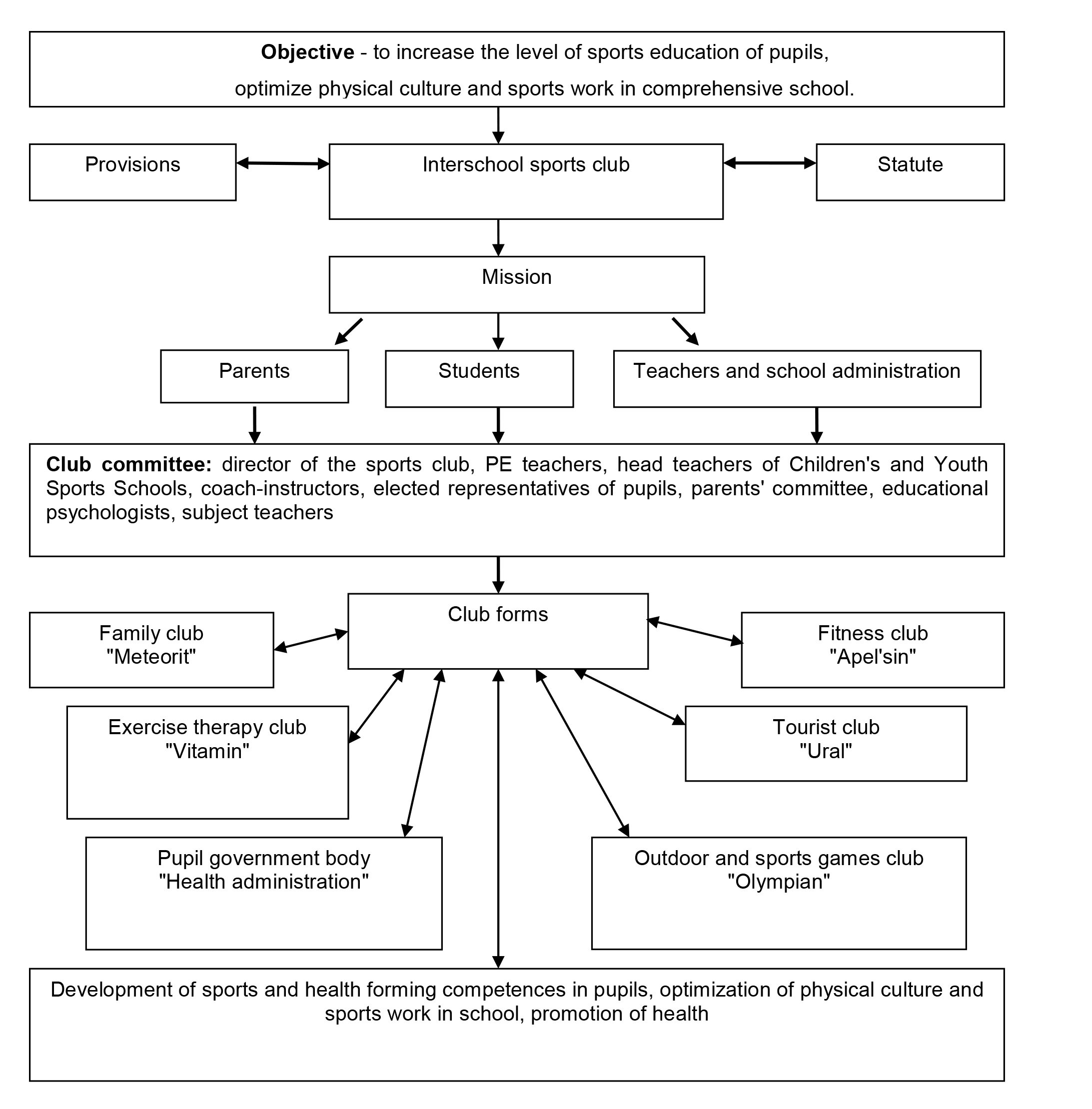
Fig. 1. Model of project of interschool sports club
Fig. 2 illustrates the interface of the computer spirograph "Eton-01" when conducting each of the three modes of research.

Fig. 2. Example of full study of external respiration function using computer spirograph "Eton-01" (A - Spirogram; B - forced expiration and inspiration complex; C - maximum breathing capacity)
The external respiration function was estimated using the software by the spirographic curve and during quiet and forced breathing (Fig. 3, 4).
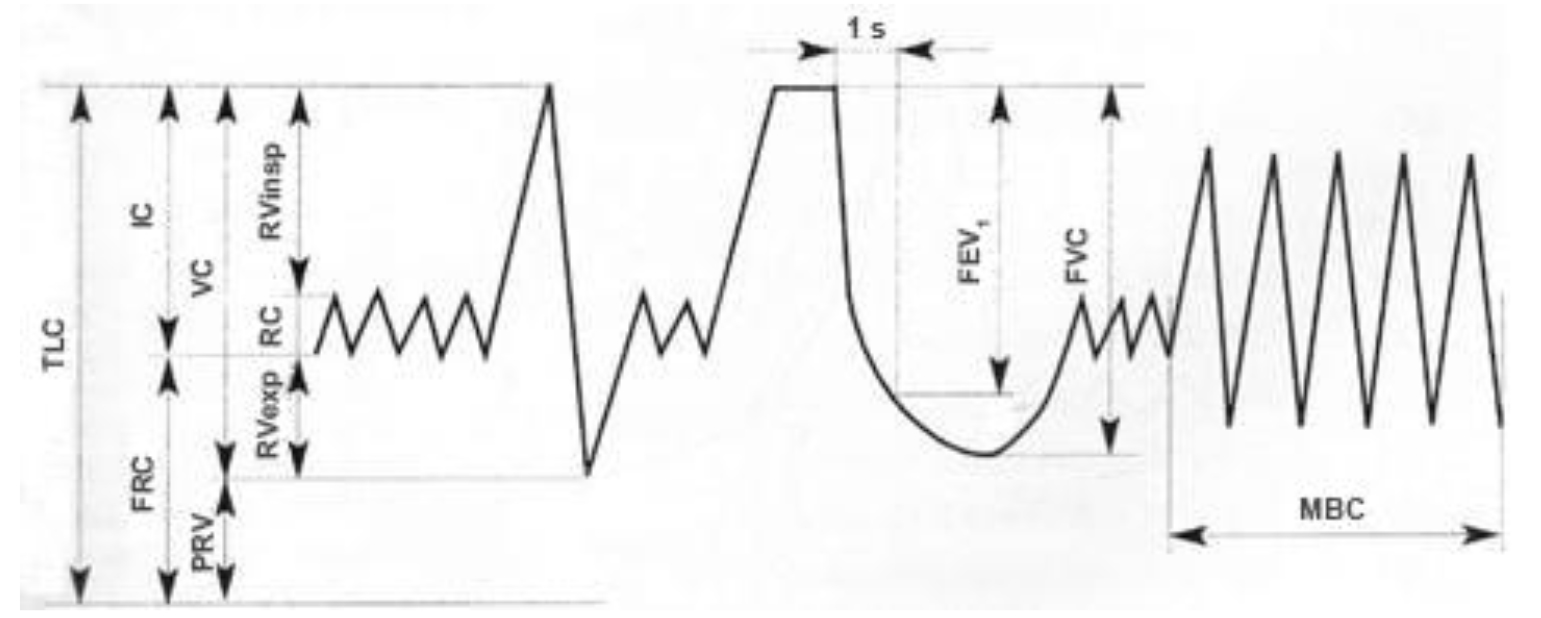
Fig. 3. Spirographic curve and lung ventilation indices
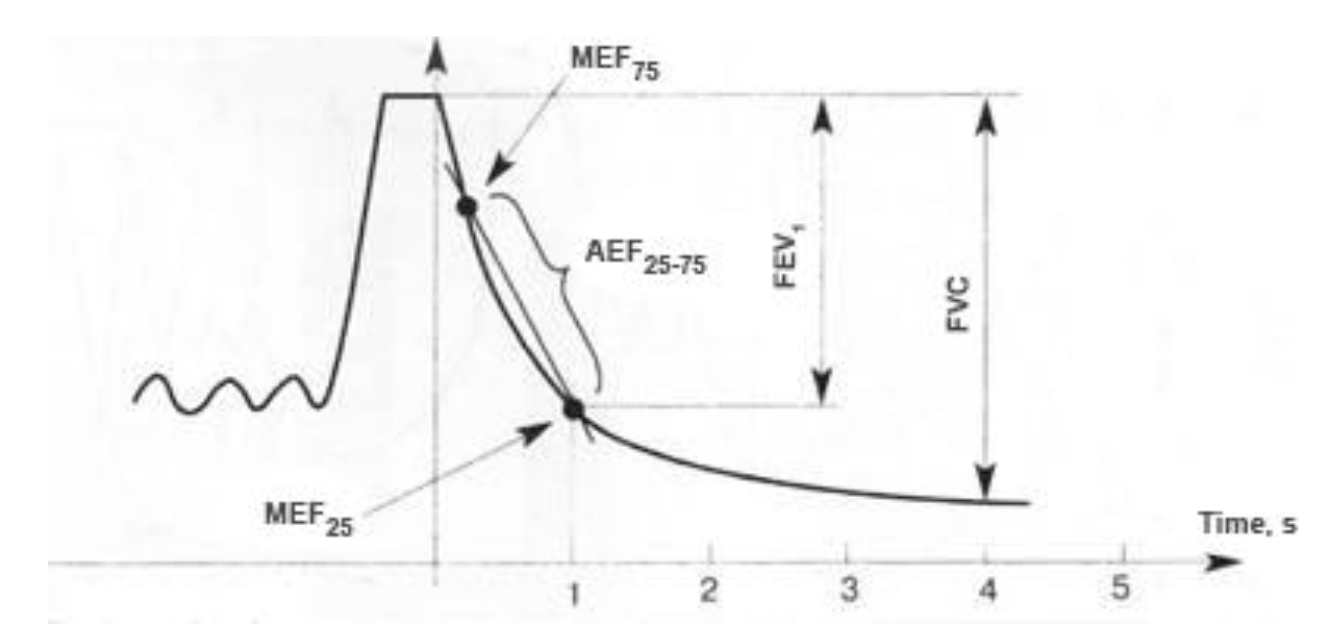
Fig. 4. Spirographic curve during forced expiration. Calculation of FEV1 and AEF25-75
The static parameters were evaluated during quiet breathing. Upon resting inspiration, we estimated the volumetric characteristics of breathing of the subject when he was taking in deepest breath possible. Then, he performed a breathing maneuver (the subject took the deepest breath, and then - made the deepest, sharpest, prolonged (for at least 6 s) exhalation) to determine the volume-speed parameters. At the final stage of the study, we recorded the maximum breathing capacity (MBC) - forced breathing for 10 seconds.
We registered the dynamics in the following parameters: inspiratory vital capacity (VCinsp, l); ratio of inspiratory vital capacity to its due values (VCinsp / DVCinsp, %); forced expiratory volume (FEV, l); ratio of forced expiratory volume to its due values (FEV / DFEV, %); forced expiratory volume per 1 second (FEV1, l); ratio of forced expiratory volume per 1 second to its due values (FEV1 / DFEV1, %); ratio of forced expiratory volume per 1 second to vital capacity (Tiffeneau index) (FEV1 / VC, %); peak expiratory flow rate (PEF, l/s); ratio of peak expiratory flow rate to its due values (PEF / DPEF, %); maximal expiratory flow at the first 25% of FVC (MEF25, l/s); ratio of maximal expiratory flow at the first 25% of FVC to its due values (MEF25 / DMEF25, %); maximal expiratory flow at the first 50% of FVC (MEF50, l/s); ratio of maximal expiratory flow at the first 50% of FVC to its due values (MEF50 / DMEF50, %); maximal expiratory flow at 75% of FVC (MEF75, l/s); ratio of maximal expiratory flow at the first 75% of FVC to its due values (MEF75 / DMEF75, %); average expiratory flow at the part of 25-75% of the volume of FVC (AEF25-75, l/s); ratio of average expiratory flow at the part of 25-75% of the volume of FVC to the due values (AEF25-75 / DAEF25-75, %); volume exhaled during forced expiration until reaching peak flow (FEVpef, l); time needed to reach PEF (Tpef, s); forced expiration time (Texp., s). Besides, there was calculated the index of state (IS, c.u.) - an integral index of state of the external respiration function.
Results and discussion. At the beginning of the experiment we recorded the statistical homogeneity of all the studied parameters of the external respiration function. At the same time, the obtained values indicate the absence of significant abnormalities of the respiratory system. These values are within the age-sex norm; however, they are within its lower limits.
The identified indicators testified to a higher risk of restrictive disorders, especially at the level of small bronchi, which could influence the alveolar gas exchange, cause the reduction of oxygen consumption and, later on, affect the level of tissue respiration in general.
Generally speaking, the assessment of the pre-test data on the external respiration function in the 7th graders enabled to detect the absence of significant gender differences in the studied parameters, normal parameters of the respiratory system, but at low reserves determined primarily by asynchronous regulation of the respiratory muscle contraction and insufficient elasticity of the bronchial tree [3].
When analyzing the final test results, we were sensible of the fact that adolescence is, in fact, the period when lung parenchyma has already developed and lung volume is intensively increasing [2, 7]. At this stage of ontogenesis, there is an increase in the muscle mass, their contractibility and lung complexity, the functional state of the respiratory system keeps improving. As seen from the survey by V.V. Mikhaylov (1983), an age-related increase in VC and MBC largely depends on the human functional state and physical fitness [5]. According to S.B. Tikhvinsky (1991), high lung static volumes can be achieved owing to high consistency of the respiratory movements and the respiratory muscle contraction, and indicates a reduced cost of operation of the external respiratory system [2]. At the same time, breathing becomes more corticalized and controllable, shifting the role in regulation towards afferent activity of the locomotor system and other analyzers [6]. Owing to their development and also a more subtle analysis of the information coming into the brain, the respiratory center receives more and more objective data on the beginning and the amount of physical load [7]. Increased lung dynamic volumes testify to the development of the respiratory muscles, along with a decrease in the frequency of breathing, which is one of the manifestations of economization of the external respiration function.
When comparing the data obtained during the pre-test and re-test of the external respiration function of pupils, a more pronounced increase in all the examined parameters in the experimental group is revealed (<0.05). In particular, contrastive analysis of the static characteristics (Fig. 5) revealed an increase of the inspiratory and expiratory VC amounting to from 30.7 to 42.9%, respectively in the experimental group versus from 11.9 to 14.1% - in the control group. Moreover, in the experimental group there was a significant increase in the indices of tidal volume (17.3%), respiratory minute volume (30.9%), inspiratory (39.0%) and expiratory reserve volumes (15.4%), inspiratory capacity (32 4%), which determined the respiration rate reduced by 17.3%. The registered dynamics in the control group seemed to conform with the age norm against the background of the anatomical and physiological changes in the body proportions.
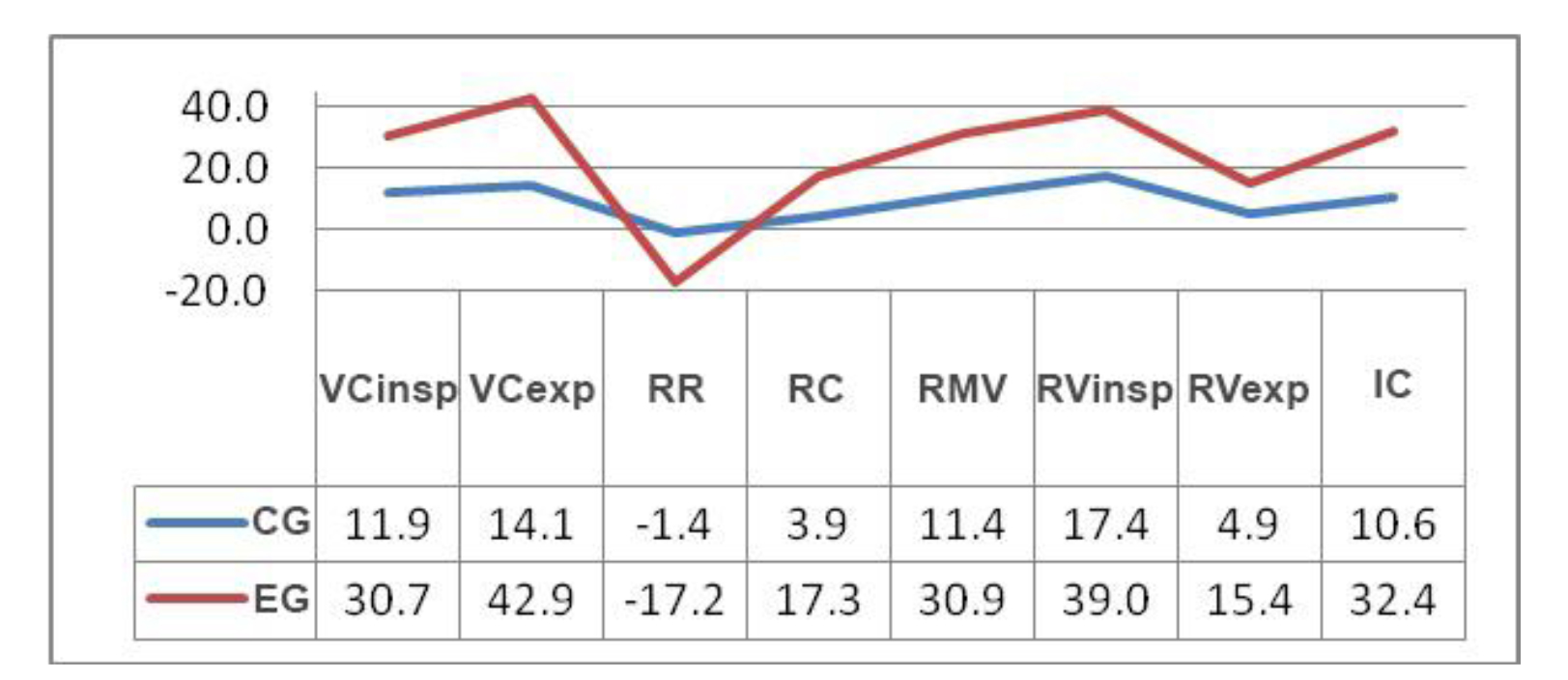
Fig. 5. Comparative assessment of dynamics of static characteristics of respiratory system in girls (%)
Fig. 6 shows the comparative assessment of the relative changes in the volume-speed parameters of the external respiration function in the girls.
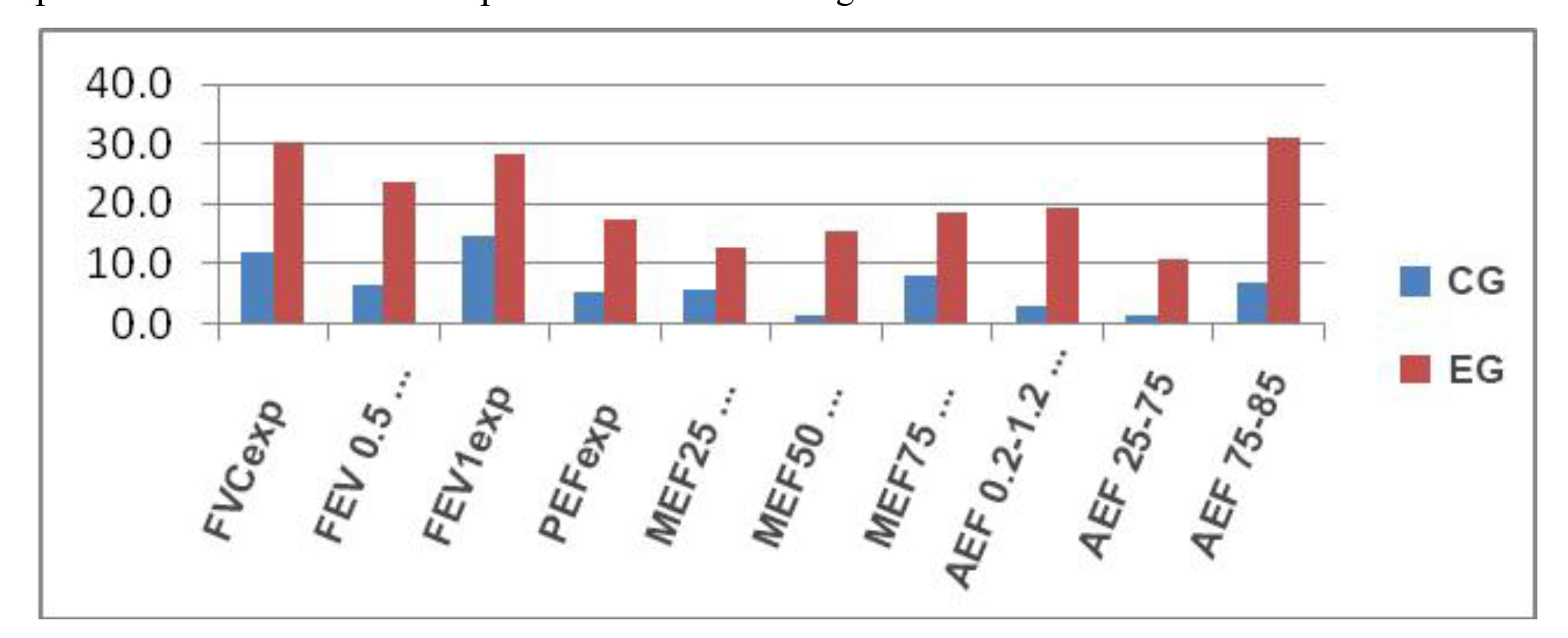
Fig. 6. Comparative assessment of dynamics of main volume-speed characteristics of respiratory system in girls
As seen from the chart, the relative increment of the volume-speed indices of the respiratory system of the EG girls significantly exceeds that of the CG girls. In particular, the expiratory FVC increased by 30.3%, the peak expiratory flow rate - by 17.4%, the maximum expiratory flow in the large bronchi - by 12.7%, in the mid-bronchi - by 15.6%, in the small bronchi - by 15.6%, which was accompanied by the increase of the average expiratory flow rate along the entire curve "flow-volume" of the forced expiration (from 10.8% to 31.0%). The growth of the respiratory muscle strength and clear airway was also observed in the control group, but it was less pronounced and ranged between 1.4% - 14.5%.
The analysis of the maximum breathing capacity, that is, the volume of the air exhaled per 1 min at maximum frequency and depth of respiratory movements, clearly testifies to the growth of the functional state of the respiratory system in the EG girls, expressed in the increase of the parameter by 17.2% versus 2.3% in CG.
Similar changes were observed in the indices of the external respiration function in boys (Fig. 7, 8). In particular, the increment of the static indices in EG equaled from 6.94% (inspiratory reserve volume) to 39.29% (inspiratory VC), while the respiration rate decreased considerably (-27.52%). As for CG, the maximum increment was equal to 14.37% (expiratory VC), while the breathing volume parameters were actually stable (1.79%), along with the inspiratory and expiratory reserve volumes (increased by 1.56% and 1.82%, respectively).
The analysis of the dynamics of the volume-speed characteristics of the respiratory system in the EG boys indicates a significant increase in the patency of airways and the strength characteristics of the breathing muscles. Thus, the increase in the minute and volumetric expiratory flow rate ranged between 10.36% and 32.38%, resulting in the forced vital capacity increased by 31.49%. In the control group, it was only the relative parameters of the large bronchial patency that increased, while in the mid-bronchi and small bronchi no statistically significant differences were registered.
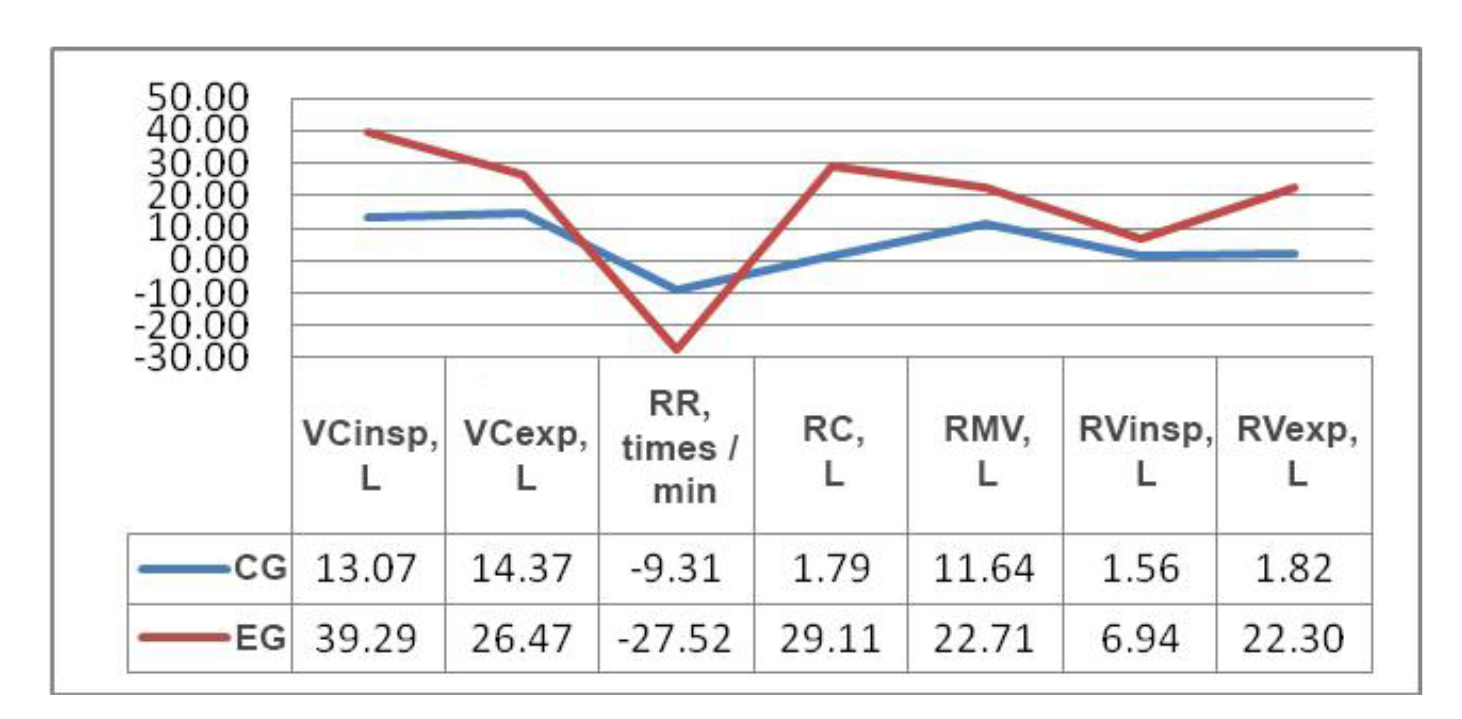
Fig. 7. Comparative assessment of dynamics of static characteristics of respiratory system in boys (%)
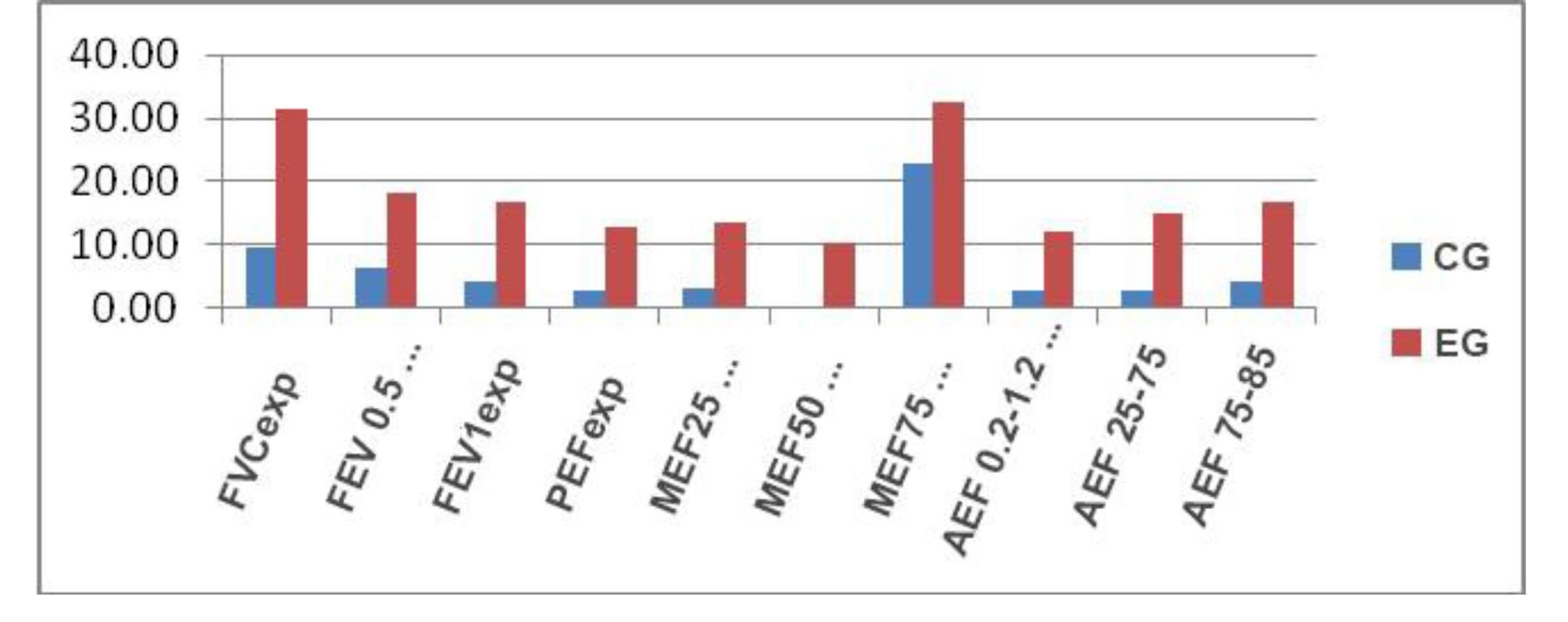
Fig. 8. Comparative assessment of dynamics of main volume-speed characteristics of respiratory system in boys
Conclusion. The findings suggest that, when designing experimental educational systems, it is extremely important to take into consideration the objective indicators of the functional state of the external respiratory system. This factor reflects child's somatic health indices and can be an indirect indicator of the level of his/her physical fitness and physical development. By identifying and registering the state of respiratory functions a teacher is able to determine the level of the corresponding body functional capacity of trainees and use these data to design teaching strategies.
In fact, basing on the findings on the dynamics of the external respiration indices, it is fair to say that the interschool sports club's activity within the experimental system of sportized physical education makes it possible to significantly increase the functional indices of the respiratory system, which testifies to the formation of the mechanisms of long-term adaptation and accumulation of cumulative training effects.
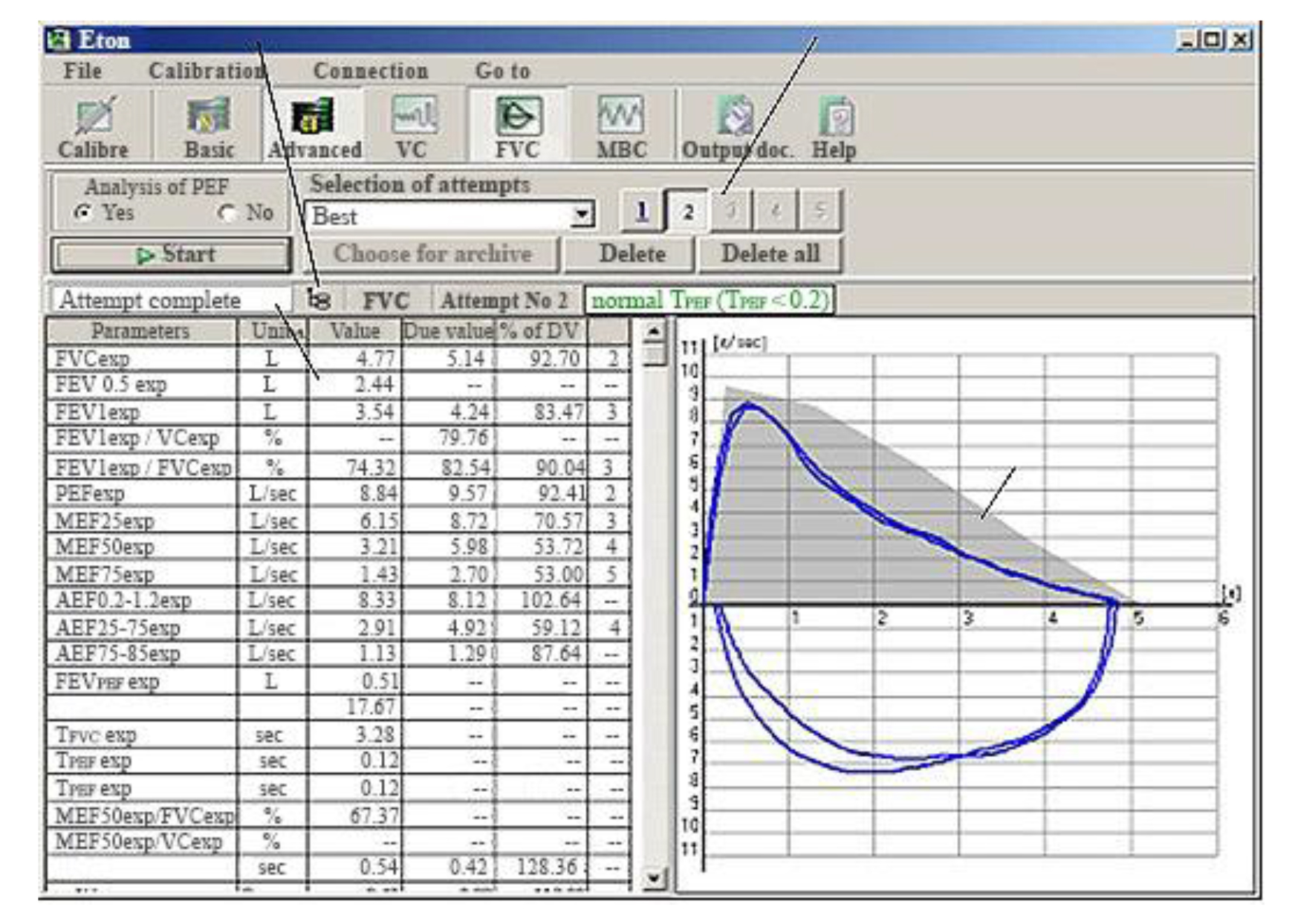
References
- Akhtemzyanova, N.M. Shkol'ny sportivny klub v usloviyakh sportizatsii fizicheskogo vospitaniya shkol'nikov (School Sports Club within sportization of physical education of pupils) / N.M. Akhtemzyanova // Teoriya i praktika fiz. kul'tury. – 2011. – № 3. – P. 86.
- Detskaya sportivnaya meditsina – Rukovodstvo dlya vrachey (Children's Sports Medicine - Doctor's Guide) / Ed. by S.B. Tikhvinskiy, S.V. Khrushchev. – Moscow: Meditsina. – 1991. – 560 P.
- Isaev, A.P. Problemy fiziologii aktivnosti i passivnosti, normy i premorbidnykh sostoyaniy (Problems of physiology of activity and passivity, norms and premorbid conditions) / A.P. Isaev, V.I. Lyapkalo, T.V. Potapova // Vestnik YuUrGU Seriya «Obrazovanie, zdravookhranenie, fizicheskaya kul'tura». – Iss. 12 № 16 (88). – 2007. – P. 8-10.
- Kemmerer, G.G. Sportivnye kluby i ikh vklad v fizicheskoe razvitie i «Sport dlya vsekh» (Sports clubs and their contribution to physical development and "Sport for All") / G.G. Kemmerer // Teoriya i praktika fiz. kul'tury. – 1991. – № 2. – P. 55-57.
- Mikhaylov, V.V. Dykhanie sportsmena (Athlete's Breathing) / V.V. Mikhaylov. – Moscow: Fizkul'tura i sport, 1983. – 103 P.
- Safonov, V.A. Nervnaya regulyatsiya dykhaniya (Nervous regulation of breathing) / V.A. Safonov, N.N. Tarasova // Fiziologiya cheloveka. – 2006. – V. 32. – № 4. – P. 64-76.
- Soroko, S.I. Individual'nye osobennosti sistemnykh reaktsiy organizma cheloveka na ostruyu gipoksiyu (Individual features of system reactions of human body to acute hypoxia) / S.I. Soroko, E.A. Burykh, S.S. Bekshaev // Rossiyskiy fiziologicheskiy zhurnal im. I.M. Sechenova. – St. Petersburg: Nauka, 2012. – V. 98. – № 11. – P. 1396-1415.
- Farber, D.A. Metodologicheskie aspekty izucheniya fiziologii razvitiya rebenka (Methodological aspects of study of child's development physiology) / D.A.Farber, M.M. Bezrukih // Fiziologiya cheloveka. – 2001. – V. 27. – № 5. – P. 8-16.
- Fonarev, D.V. Ispol'zovanie innovatsionnoy tekhnologii sportivno orientirovannogo fizicheskogo vospitaniya v srednikh obshcheobrazovatel'nykh uchrezhdeniyakh (Innovative technologies of sports-centered physical education in secondary educational institutions) / D.V. Fonarev. – Chaykovsky: ChGIFK, 2003. – 71 P.
Corresponding author: cherepov.e@mail.ru




